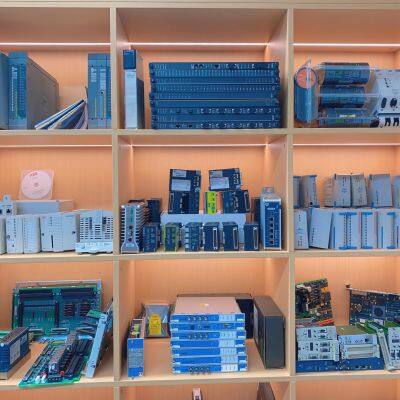Product Description
I. Overview
Praxis 98.6.020.672 is a powerful and exquisitely designed industrial automation component, mainly used in scenarios such as industrial control cabinets and automated production lines, undertaking key tasks of data processing, signal conversion and equipment control. Its design concept focuses on providing efficient and stable operation support for industrial systems. With excellent performance, it can operate reliably in various complex industrial environments, ensuring the smooth progress of the entire automation process.
In the automated assembly line of an automobile manufacturing plant, this component can accurately interface with various sensors and actuators, quickly process analog and digital signals such as the position of auto parts and assembly force collected by the sensors, and send control commands to executive devices such as robotic arms and tightening machines according to preset programs. This ensures the precise assembly of parts, greatly improves assembly efficiency and quality, reduces the cost of manual intervention, and effectively promotes the automation process of automobile production.

II. Technical Parameters
Power supply specifications: Supports 100 - 240V AC wide voltage input, with a frequency of 50/60Hz and a power of 50W. It adapts to power supply standards in different regions around the world, has good adaptability to voltage fluctuations, and can operate stably in common power grid fluctuation environments. It also provides an 18 - 32V DC power supply option with a power of 50W, facilitating scenarios with specific DC power supply requirements.
Signal processing capability: Equipped with multiple digital input and output channels. The input channels can quickly respond to various types of signals such as external dry contacts and transistor outputs, with extremely short response time, which can quickly capture the switching state changes of equipment. The output channels have strong driving capability and can directly drive loads such as small relays and indicator lights, meeting basic equipment control needs. In terms of analog quantities, it has a certain number of analog input and output channels, supporting common analog signal types such as 4 - 20mA and 0 - 10V, with high resolution, which can accurately collect and output analog signals, meeting the needs of precise measurement and control of continuously changing physical quantities such as temperature, pressure and flow.
Communication interface: Integrates serial communication interfaces such as RS - 485 and RS - 232, supports common industrial communication protocols such as MODBUS RTU, and can conveniently exchange data with PLCs, upper computers and other devices to realize remote monitoring and centralized control. Some models may also be equipped with an Ethernet interface, supporting the TCP/IP protocol, which greatly improves the data transmission rate and meets the needs of high - speed data communication scenarios.
Protection level: The product shell is made of durable materials, with certain dustproof and splash - proof capabilities. The protection level reaches IP [X] (the specific protection level needs to be determined according to the actual product), which can effectively resist dust, oil stains and a small amount of splashing water in industrial sites, ensuring the stable operation of internal circuits.
Dimensions and weight: The overall size is compact, easy to install in control cabinets with limited space. The specific dimensions are [length X width X height (unit: mm)]; the weight is about 7.500kg. While ensuring structural strength and complete functions, it also takes into account the convenience of installation and transportation.
Working environment: It has a wide working temperature range and can work stably in an ambient temperature of - 20°C to + 60°C, adapting to different temperature environments such as high - temperature workshops and cold storages. The relative humidity range is 5% - 95% (no condensation), and it can operate normally in humid industrial environments, not easily prone to failures due to humidity.
III. Functional Features
Multifunctional integration: Integrating digital and analog signal processing functions, it can meet the complex signal acquisition and control needs of industrial sites without additional configuration of multiple modules. It effectively simplifies the system architecture, reduces hardware costs and system wiring complexity, and improves system integration efficiency.
High reliability: Through rigorous circuit design and selection of high - quality components, it has excellent anti - interference ability, can operate stably in strong electromagnetic interference environments (such as industrial sites with a large number of frequency converters and motors), and avoids signal distortion and misoperation. At the same time, it has a perfect self - diagnosis function, which can monitor its own working status in real time. Once a fault is detected, it will immediately feed back to the control system through indicator lights or communication interfaces, facilitating rapid troubleshooting and repair.
Flexible communication: Rich communication interfaces and protocol support enable it to be easily integrated into various industrial automation networks. Whether it is a traditional serial communication network or an emerging Ethernet industrial network, it can achieve seamless docking, facilitating cooperation with automation equipment of different brands and types, and adapting to diversified industrial control system architectures.
Easy installation and maintenance: It adopts a standard installation method (such as rail mounting), which is convenient and fast, and can be quickly installed in the control cabinet. The modular design concept makes each functional module relatively independent. If a module fails, it can be replaced separately, which greatly shortens the maintenance time, reduces maintenance costs, and improves equipment availability.

IV. Common Faults and Solutions
Abnormal power supply
Possible causes: The input voltage is beyond the normal range; the power connection is loose or oxidized, resulting in poor contact; the internal power circuit is faulty.
Solutions: Use a multimeter to detect the input voltage to confirm whether it is within the range of 100 - 240V AC or 18 - 32V DC. If not, check the power supply line and power supply equipment; re - plug and fasten the power connection, and clean the oxide on the connection terminals; if the internal power circuit is faulty, contact professional maintenance personnel to replace the damaged power module or components.
Communication failure
Possible causes: The communication cable is damaged, short - circuited or open - circuited; the communication interface settings are incorrect (such as baud rate, data bits, parity and other parameters do not match the communication object); the communication interface hardware is damaged.
Solutions: Check the appearance of the communication cable, use a cable tester to detect the connectivity of the cable, and replace it with a new one if it is damaged; carefully check the communication interface parameters to ensure they are consistent with the connected equipment; if the hardware is damaged, replace the corresponding communication interface module or the entire device (if the communication interface cannot be replaced separately).
Inaccurate signal acquisition
Possible causes: The sensor is faulty or calibrated inaccurately; the analog input channel is interfered; the signal cable shielding is poor.
Solutions: Calibrate the sensor with a standard signal source or replace the faulty sensor; check whether there are strong interference sources near the analog input channel, and if so, take anti - interference measures such as shielding and grounding; replace with a signal cable with a shielding layer and ensure the shielding layer is properly grounded.
Abnormal control output
Possible causes: The output load is overloaded, causing the output channel protection action; the output drive circuit is damaged; there is a logical error in the control program.
Solutions: Check the output load current to confirm whether it exceeds the rated value of the channel. If overloaded, reduce the load or add an intermediate relay for expansion; use a multimeter to detect each component of the output drive circuit and replace the damaged ones; carefully check the control program and correct the logical errors.


Emerson VE4017P0 M-series H1 I/O Interface Card
Emerson VE4022 M-series Profibus DP Series 2 Plus Interface Card
Emerson VE4032S1T2B1 DeltaV M-series Traditional I/O
Emerson VE4033S2B1 Redundant Analog Input Card
Eaton XVH-340-57CAN-1-10 Touch Panel
Eaton XVH-340-57MPI-1-13 Touch Panel
WOODHEAD APP-ETH-PCU PCU2000ETH Ethernet Network Interface PCI Card
WATLOW ANAFAZE CLS208 Temperature Controller
WATLOW ANAFAZE CAS 16CLS/CAS Temperature Controller
Yokogawa UP55A-001-11-00 Profile Controller
TOSHIBA USIO21 Distributed Control System
TEWS TVME200-10 6U VMEbus Carrier
 yezi
Hi there! Welcome to my shop. Let me know if you have any questions.
yezi
Hi there! Welcome to my shop. Let me know if you have any questions.




